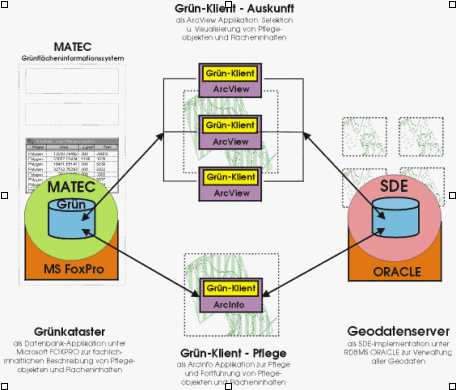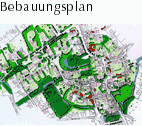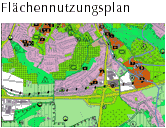
To solve spatial-related planning tasks, the use of Esri GIS products is widespread in Germany. Concepts and buildup of geographic information systems in Germany are represented with the help of practical examples (only power point presentation). In contrast to the USA, Germany is a small country with high population density and complicated lawmaking related to regional planning. These facts influence the way of working with GIS. The paper tries to compare the approaches in the two countries and figure out the peculiarities and the strengths and weaknesses.
Today GIS technology is an essential part of spatial related planning in Germany. In German government, in planning offices and technology oriented enterprises GIS-Tools are implemented on different levels. With it GIS of Esri plays an important role. More than 70% of GIS-Users in state authorities and more than 50% of GIS-Users in local authorities use products of the world leading GIS-Company.
To prepare the implementation of a planning GIS system, you should start with a phase of concept. By this I mean the evaluation of data as well as an analysis of customers workflow (data and process modelling). You need detailed information about qualification of staff and - last but not least - a hardware and software profile is necessary. One can say, in Germnay a wide variety of GIS and IT consulting is provided to configure and integrate a planning system successfully

The important role of geodata will be clear, if you compare data with the other components of the system, GIS hardware and software. Hardware is becoming cheaper and cheaper and at the same time more and more powerful. Compare GIS software offered fifteen years ago with ArcView 3.2 today, you will get more and better functions for a lower price. In contrast to this, data capture and maintainance is very expensive. Your database will expand year by year and it will represent the most valuable part of the whole system. In Germany survey data and digital topographic maps are available in high quality and in a wide variety of scale. Subject specific data is closely related to the planning project, it's needed for. Often this data is not yet available and has to be digitized. That's why the investment is so high.

In Germany GIS based tools are available on different levels. At one hand of the scale we have planning tools, e.g. designed as ArcView extensions. Such planning tools has been developped for a lot of planning applications. Some examples are applications like "specific development plan", "sewage management", "green management system" or "digital road tree cadastre". If you intend to combine different GIS components to solve a specific task you need a planning informations system, beeing made of (GIS-) server technology with corresponding client software, that is tailored to the particular assignment.
Within the limitations of my short presentation, I will distinguish the three features scale, cost and acceptance
Germany has a little state territory, but a high population density. The opposite is valid for the USA. In Germany planners like to work in very large scales (1:1000). Often the projects are related to the single property and each object is measured with high precision. Different scales, most of the times > 1:1000 are used in USA because the planning areas - as a rule - are bigger. Presentation often are based on street maps or merged land parcels.
In Germany geodata is very expensive, even if captured by the public administration (e.g. department of survey). Labor costs are high. In the USA geodata is accessible for everyone if once payed by the public administration. Also GIS software products are (as a rule) more expensive than in the USA (because most of the products are developed by US american companies, e.g. the languae support cause additional costs).
German planners are more skeptical and compare the results of the traditional method with the possibilities of the new GIS tools. Because of the high costs they hesitate to invest. From my personel perspective, american planners are open for new developments and try to integrate GIS trends in their terms of reference. Although they pay attention to the costs and quastion the return on investment.

